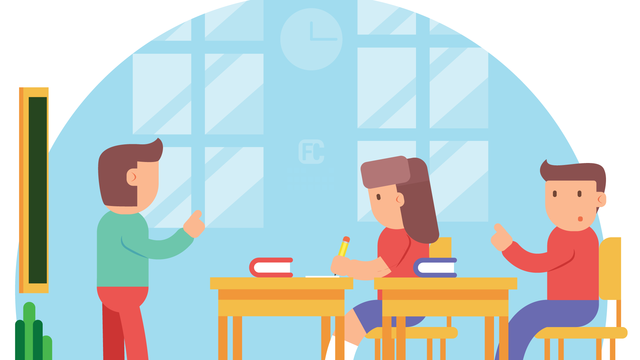
To access the full video please subscribe to FLLCasts.com
- #1224
- 26 Apr 2019
In the classes, the students work in pairs and the class there must be at least 7 or 8 students. The reason is that all the students can work together, can compete with one another and can help each other. When a group is of about 5 students or less they tend to get bored, the mood in the room is lazy and the atmosphere is too quiet. With 6 or fewer children, there will be about three teams working and at the end, there will be only one or two robots ready for the missions in time. That means that it will be difficult to motivate the kids, it will be difficult to give interesting tasks and competitions. In a group, there must be 3 or 4 complete robots so that the kids “are self-propelled”.
In a group, the teacher divides students into pairs of two and each pair works on one computer with one robotic set. Sometimes the teacher may set students to work alone, most often when the group has an odd number of students, but it is very important that the single student is not always the same!
It is hard for the children to work in pairs, especially when they are younger and this is why we teach them to work in teams and to communicate.
There are several approaches for sharing the work in a pair:
- One of the students builds a few steps of the robot instructions, then the other one builds a few more and then switch again. This is a very good approach, especially in the first levels.
- One of the students built and the other one finds and handles the required LEGO pieces - BAD approach. This way only one of them learns how to build and on the next lesson the helper will be in the helper role again.
- both students work on the robot without taking turns - the best approach! Both can work and learn and this is easy to achieve with constructions that have obvious left and right parts. One student builds the left part, the other the right part and make it one together.
When the students work in pairs they support and motivate each other to solve tasks and that helps the work of the teacher.
Cheating
The teacher should not prohibit cheating (looking at another’s solution). Actually, our students are not cheating. Cheating is when the student is in school, being examined he doesn’t know the right answer and looks at a peer’s solution. A student cheats not because he wants to learn something or because it is interesting, but because he wants to earn a good mark. Since in Robopartans the students are not tested, they actually don’t cheat. Therefore, the possibility to see the solution to a problem from another team should be encouraged. When one of the teams solve a task, while the other teams are still working on it, they may be prompted to look at the solution of the finished team. But they will not be "cheating." They see that it is allowed. The effect is that they learn how to perform the task because they want to solve theirs. Not because they will get a good score.
Character pairing and rotation
As it was said, students have a hard time working together. They are simply not used to share tasks and resources. Another problem is the different characters of the students. Very broadly defined, there are two types of characters that concern us in class: active characters and passive characters. The active students happily accept the tasks of building and programming the robot. The passive students would also do those tasks, given chance and time. It is very important not to create a pair of an active and a passive student because the active will take and do most of the work and the passive student will just watch closely. It is a rare exception when students learn simply by watching so minimize pairs like this, especially in the first lesson of a new group.
You as a teacher can feel the characters of the children during the initial discussion in the first lesson. The way a student answers will tell you if the student is shy or not and in the end you will be able to pair students according to their age and attitude.
The other aspect of conducting a class is the rotation of students in pairs. Try to pair every student with a different partner in every lesson on the course. Students will resist, but it will improve their team-working skills over time. Of course, keep in mind the character pairing principle and observe how well each team is sharing tasks. If there is a lack of balance in both building and programming, try to speak with the pair. Explain to them, that they are equal and if there is any imbalance, the hindered student needs to vocalize his needs to the partner.
Later on, if nothing else helps forbid the active student to touch the things they work with - both the computer, keyboard and mouse and the LEGO parts or the robot. In that case, you must empower the active student to monitor and advise his partner, but only verbally, without doing anything himself.
Speaking of balance and imbalance, one of the greatest imbalances is “I will build, you will program”. A teacher will often hear that and should cut such ideas in their roots!
Courses and lessons with this Tutorial
This Tutorial is used in the following courses and lessons

Instructors Remote Training
If you are working with students and you want to introduce Robotics to your class or you want to mentor a FLL team, but you are insecure about your technical knowledge in the Robotics field, then this is the right place for you. Having in mind teachers' busy schedule, we have design two different schedules and added an option to design one just for you. FLLCasts's Mindstorms EV3 Robotics Online Training is the perfect match for any teacher.
After the completion of each task the participant has to upload his solution for verification.
- 136
- 280:11
- 156

Methodology
The first chapter describes a way of thinking that could be embraced from the first read or could be so unorthodox so that the reader could never get used to it. We are constantly improving the methodology, but it must be stressed that the classes in “Robopartans” must be conducted in the way described here or shouldn’t be conducted at all.
Main concepts:
-
We as teachers give more questions and fewer answers.
-
The students must be allowed to go wrong and fail.
-
The students work together in pairs.
-
No solution is the correct one, any solution works
- 4
- 1
- 8
- 3d_rotation 0